This small fish is a real gem in the aquarium world. It’s called Taeniacara candidi in science talk. The name means “slender beauty” in Latin, which fits this pretty fish perfectly.
Table of Contents
These fish live in the Amazon River in Brazil. They like to swim near the bottom of slow-moving streams. In tanks, they enjoy hiding in plants and rocks.
Canary Cichlids eat tiny animals and plants. They look for food by sifting through sand with their mouths. This habit helps keep the tank clean!
These fish are peaceful and shy. They flourish in the company of other peaceful fish. In the wild, they live in groups, so it’s nice to keep a few together in a tank.
Fun fact: These fish can change color! When they feel happy or want to mate, they show bright yellow stripes.
Scientists first found this fish in 1935. Dr. William Gosline named it after his teacher, Dr. Carl Bond.
Some people call this fish the Dwarf Flag Cichlid or the Candidi Cichlid in pet stores.
These little fish only grow to about 2 inches long. That’s smaller than a credit card!
Experts think there might be more types of this fish that we haven’t found yet. Researchers are still looking in the Amazon for new kinds.
This fish is special because it’s one of the smallest cichlids in the world. It’s also one of the prettiest, with its bright colors and cute size.
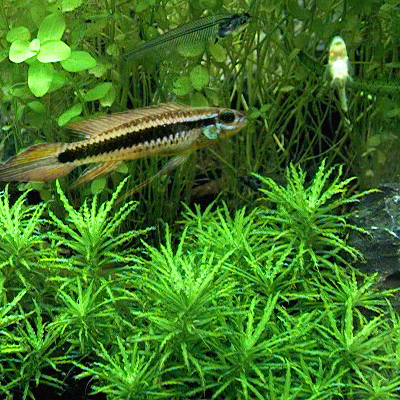
Canary Cichlid Key Information
The Canary Cichlid, a tiny jewel from South America, is known for its vibrant coloration. When happy and healthy, these fish display a stunning yellow base color adorned with black vertical stripes. Their fins often show a mix of yellow and black patterns, creating a striking contrast. During breeding, males may develop more intense colors, with their yellow becoming almost golden and their stripes darkening. Females tend to have a softer yellow hue but still maintain the beautiful striped pattern that makes this species so captivating.
| Family | Cichlidae |
| Origin | Amazon River basin, Brazil |
| Price | $10 – $30 per fish, depending on size and availability |
| Common Names | Dwarf Flag Cichlid, Candidi Cichlid, Slender Beauty Cichlid |
| Variants | No known color variants; only wild-type exists |
| Ideal Tank Size | 20-30 gallons for a small group; larger tanks for community setups |
| Water Parameters | pH 6.0-7.5, temperature 72-79°F (22-26°C), soft to medium hardness |
| Lifespan | 3-5 years with proper care |
| Full Size | Up to 2 inches (5 cm), one of the smallest cichlid species |
| Natural Environment | Slow-moving streams with sandy bottoms and plenty of vegetation |
| Behavior | Peaceful, shy, and social; best kept in small groups |
| Habitat Preference | Bottom to mid-level dweller, enjoys exploring substrate |
| Aquarium Decoration | Dense vegetation, driftwood, and fine sandy substrate to mimic natural habitat |
| Ideal Tank Mates | Other peaceful small fish, dwarf cichlids, small tetras, and corydoras |
| Fish to Avoid | Large or aggressive species that may intimidate or prey on them |
| Best Foods/Diet | Small live or frozen foods (brine shrimp, bloodworms), high-quality flakes or pellets |
| Disease | Susceptible to ich, fin rot, and other common freshwater fish diseases |
| Sex-switch | Not known to change sex |
| Gender Differences | Males slightly larger and more colorful during breeding; females may be plumper |
| Care Level | Moderate; requires stable water conditions and a well-maintained tank |
| Breeding Level | Challenging; needs specific water conditions and may require separate breeding tank |
Ideal Tank Mates for Canary Cichlid
Before diving into the ideal tank mates for the Canary Cichlid, it’s crucial to understand that these fish thrive in peaceful communities. Their shy nature and small size make them vulnerable to larger or more aggressive species. The best companions for Canary Cichlids are those that share similar water requirements and have a calm demeanor. Let’s explore ten compatible tank mates that can create a harmonious aquarium environment.
Neon Tetra
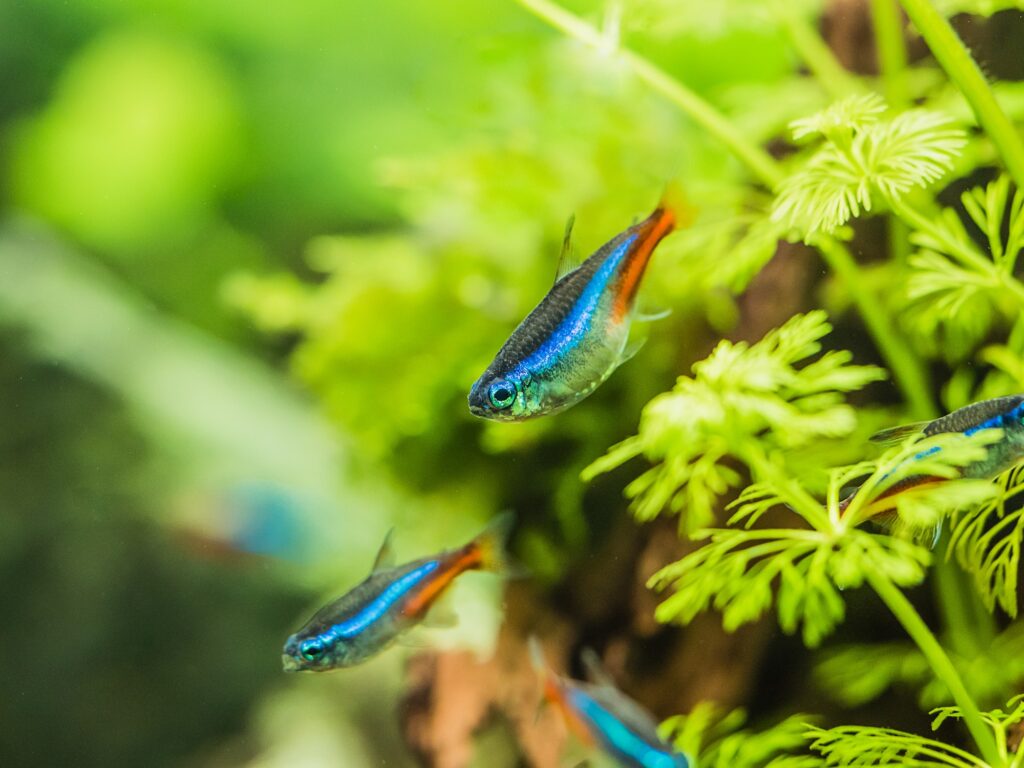
Neon Tetras are a perfect match for Canary Cichlids due to their vibrant colors and peaceful nature. These small, schooling fish add a beautiful contrast to the yellow hues of the Canary Cichlid. Their active swimming in the middle of the tank complements the Canary Cichlid’s bottom-dwelling habits, creating a lively yet balanced aquarium ecosystem.
| Common/Market Names | Neon Tetra, Black Neon, Cardinal Tetra |
| Price Range | $2 – $5 |
| Care Level | Easy |
| Behavior | Peaceful |
| Life Span | 5-8 years |
| Max Size | 1.5 inches |
Corydoras Catfish
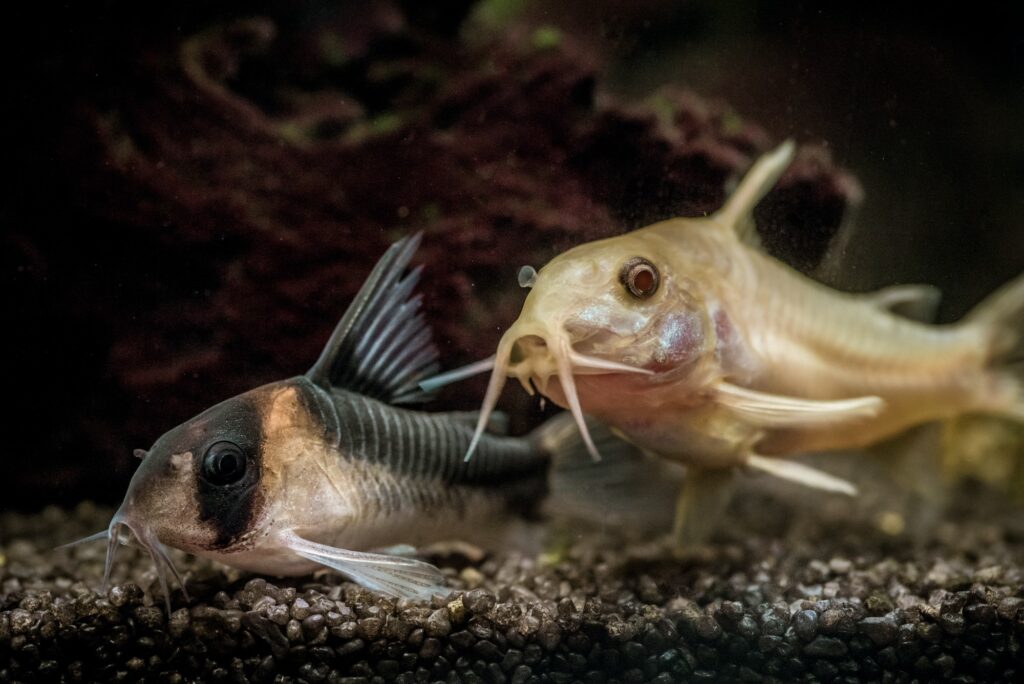
Corydoras Catfish make excellent bottom-dwelling companions for Canary Cichlids. These armored catfish share the Canary Cichlid’s preference for sandy substrates and help keep the tank clean by scavenging for leftover food. Their peaceful nature and similar size make them ideal tankmates, creating a harmonious community in the lower levels of the aquarium.
| Common/Market Names | Cory Catfish, Peppered Cory, Albino Cory |
| Price Range | $3 – $10 |
| Care Level | Easy |
| Behavior | Peaceful |
| Life Span | 3-5 years |
| Max Size | 2-3 inches |
Harlequin Rasbora

Harlequin Rasboras offer a unique color palette that complements the Canary Cichlid beautifully. These small, active fish prefer the upper and middle parts of the tank, leaving plenty of space for the Canary Cichlids below. Their peaceful temperament and schooling behavior add movement and interest to the aquarium without causing stress to the cichlids.
| Common/Market Names | Harlequin Rasbora, Red Rasbora, Copper Rasbora |
| Price Range | $2 – $5 |
| Care Level | Easy |
| Behavior | Peaceful |
| Life Span | 5-8 years |
| Max Size | 2 inches |
Otocinclus Catfish
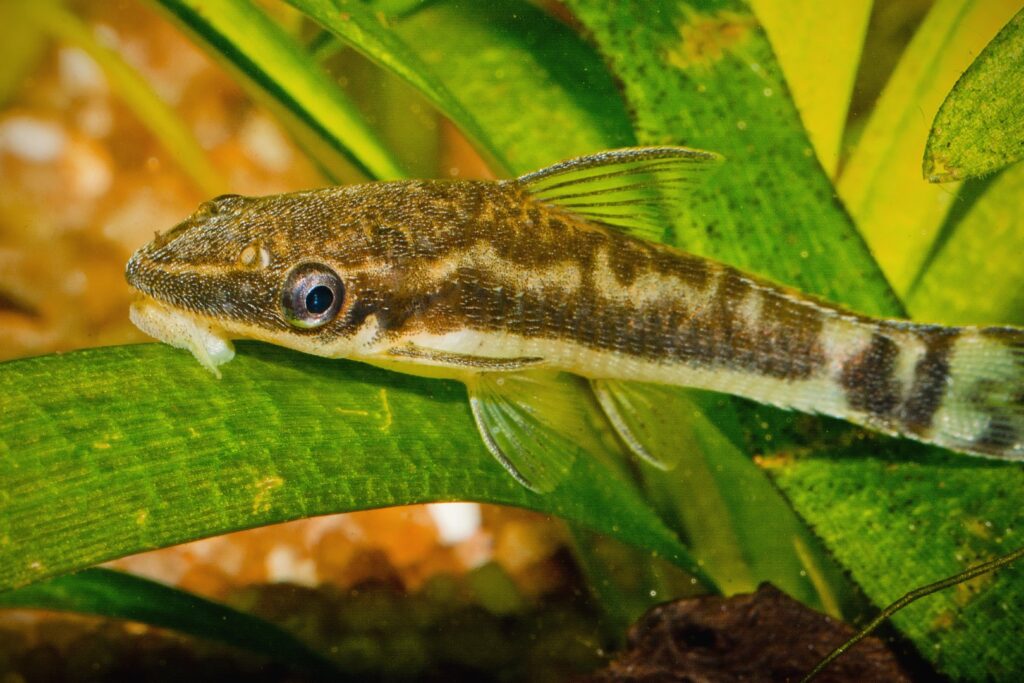
Otocinclus Catfish are excellent algae eaters that share the Canary Cichlid’s preference for clean water. These tiny, peaceful catfish spend their time grazing on algae, helping to maintain a clean tank environment. Their small size and non-aggressive nature make them perfect companions that won’t compete for food or territory with the Canary Cichlids.
| Common/Market Names | Otocinclus Catfish, Dwarf Suckermouth Catfish |
| Price Range | $2 – $5 |
| Care Level | Moderate |
| Behavior | Peaceful |
| Life Span | 3-5 years |
| Max Size | 1-2 inches |
Ember Tetra
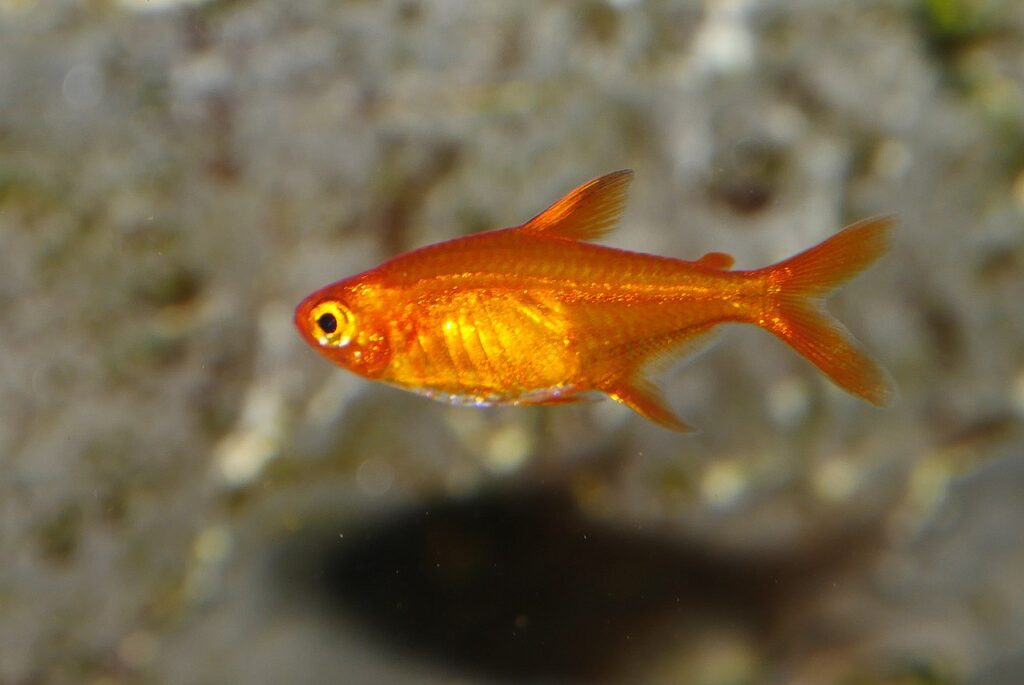
Ember Tetras bring a fiery splash of color to the aquarium that contrasts beautifully with the Canary Cichlid’s yellow hues. These tiny, peaceful fish prefer the middle to upper levels of the tank, creating a visually appealing display without encroaching on the Canary Cichlid’s territory. Their small size and gentle nature make them ideal tankmates.
| Common/Market Names | Ember Tetra, Fire Tetra |
| Price Range | $3 – $5 |
| Care Level | Easy |
| Behavior | Peaceful |
| Life Span | 2-4 years |
| Max Size | 0.8 inches |
Dwarf Gourami
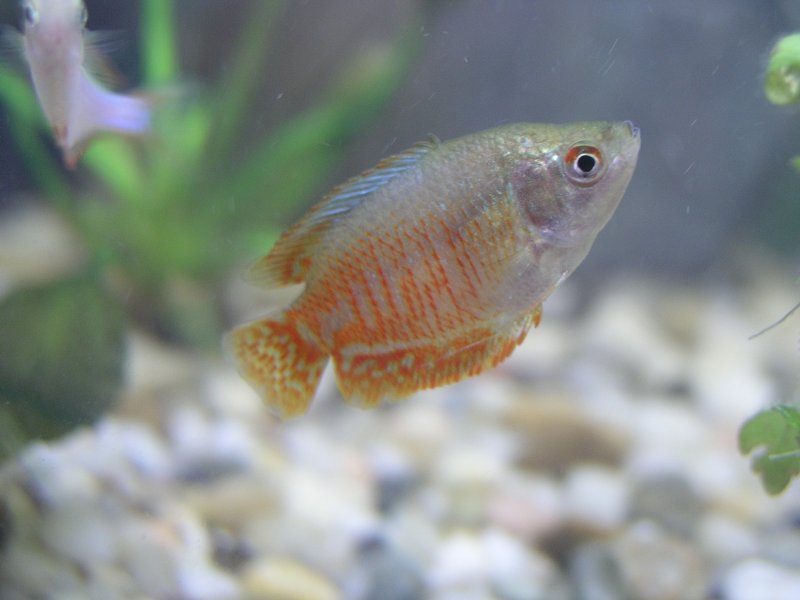
Dwarf Gouramis can add a touch of elegance to a Canary Cichlid tank. These peaceful, colorful fish occupy the middle to upper levels of the aquarium, providing a different shape and swimming style compared to the other tank mates. Their calm demeanor and similar size make them compatible with Canary Cichlids, creating a diverse and harmonious community.
| Common/Market Names | Dwarf Gourami, Flame Gourami, Powder Blue Gourami |
| Price Range | $5 – $15 |
| Care Level | Easy to Moderate |
| Behavior | Peaceful |
| Life Span | 4-6 years |
| Max Size | 2-3 inches |
Celestial Pearl Danio
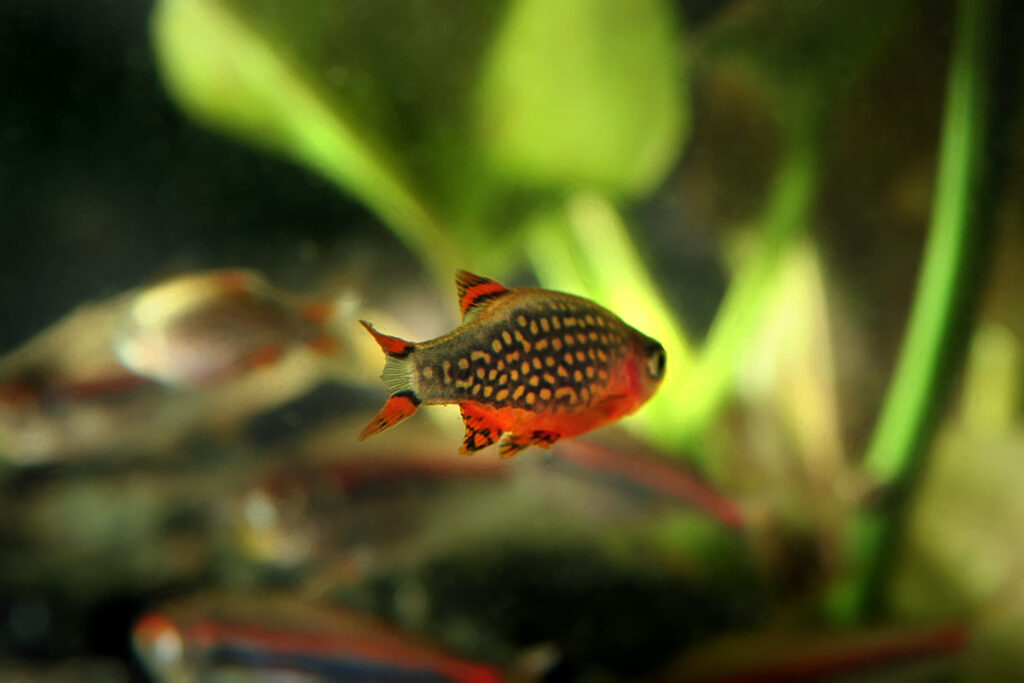
Celestial Pearl Danios, also known as Galaxy Rasboras, are stunning micro fish that make excellent companions for Canary Cichlids. Their small size and peaceful nature ensure they won’t bother the cichlids, while their striking patterns add visual interest to the tank. These shy fish share similar water requirements and appreciate planted environments, making them ideal tankmates.
| Common/Market Names | Celestial Pearl Danio, Galaxy Rasbora |
| Price Range | $5 – $10 |
| Care Level | Moderate |
| Behavior | Peaceful |
| Life Span | 3-5 years |
| Max Size | 1 inch |
Kuhli Loach
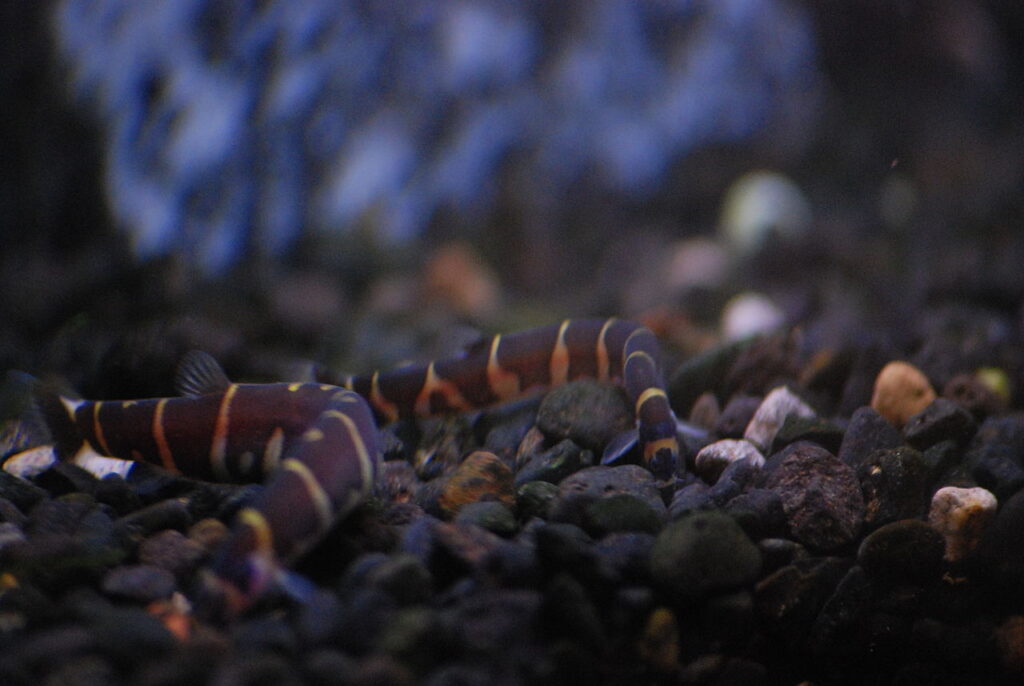
Kuhli Loaches are fascinating eel-like fish that provide a unique addition to a Canary Cichlid tank. These nocturnal bottom-dwellers are peaceful and shy, much like the Canary Cichlids. They help keep the substrate clean and add an interesting element to the aquarium ecosystem without competing for the same resources as the cichlids.
| Common/Market Names | Kuhli Loach, Coolie Loach, Leopard Loach |
| Price Range | $3 – $8 |
| Care Level | Easy to Moderate |
| Behavior | Peaceful |
| Life Span | 10+ years |
| Max Size | 3-4 inches |
Bristlenose Pleco
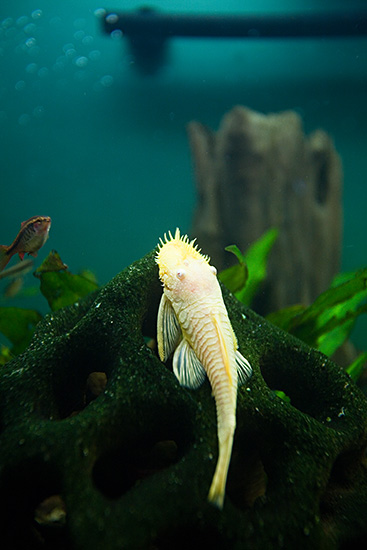
Bristlenose Plecos are excellent algae eaters that can coexist peacefully with Canary Cichlids. These armored catfish stay relatively small compared to other pleco species, making them suitable for community tanks. They spend most of their time attached to surfaces, cleaning algae, and won’t compete with the Canary Cichlids for swimming space or food.
| Common/Market Names | Bristlenose Pleco, Bushynose Pleco, Ancistrus |
| Price Range | $5 – $20 |
| Care Level | Easy |
| Behavior | Peaceful |
| Life Span | 5-10 years |
| Max Size | 3-5 inches |
Cherry Shrimp
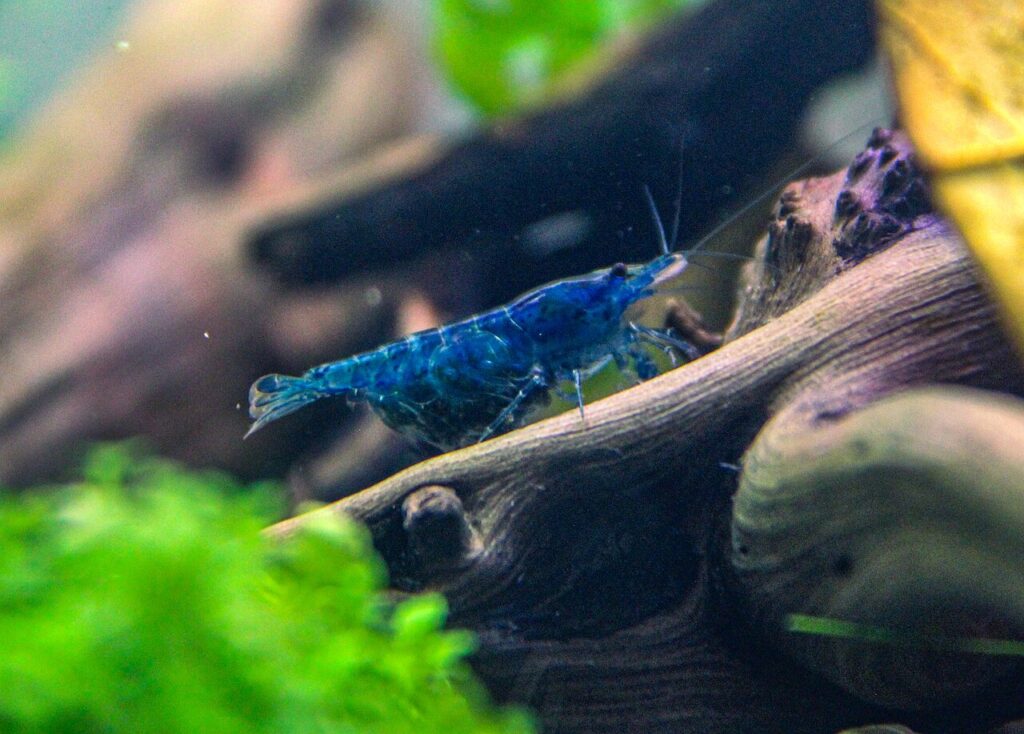
While not a fish, Cherry Shrimp make excellent tank mates for Canary Cichlids. These colorful invertebrates add a pop of red to the aquarium and help keep it clean by consuming algae and detritus. Their small size means they won’t threaten the cichlids, and their constant foraging activity adds interest to the lower levels of the tank.
| Common/Market Names | Cherry Shrimp, Red Cherry Shrimp, RCS |
| Price Range | $2 – $5 |
| Care Level | Easy |
| Behavior | Peaceful |
| Life Span | 1-2 years |
| Max Size | 1-1.5 inches |
These ten tank mates offer a variety of colors, shapes, and behaviors that can create a beautiful and harmonious community aquarium with Canary Cichlids. When selecting companions, always consider the specific needs of each species and ensure your tank is adequately sized and maintained to support the community.
FAQs about Canary Cichlid
Are Canary Cichlids good for beginners?
While not the easiest fish to care for, Canary Cichlids can be suitable for dedicated beginners who are willing to research and maintain proper water conditions. Their peaceful nature makes them less challenging than some other cichlid species.
How many Canary Cichlids should be kept together?
For the best results, keep Canary Cichlids in small groups of 4-6 individuals. This allows them to display natural social behaviors and reduces stress.
Can Canary Cichlids change gender?
Unlike some fish species, Canary Cichlids cannot change gender. They are born either male or female and remain that way throughout their lives.
Do Canary Cichlids need special lighting?
While not requiring specific lighting, Canary Cichlids appreciate a natural day-night cycle. Moderate lighting that supports live plants in the aquarium is ideal for their environment.
How often should I feed my Canary Cichlids?
Feed Canary Cichlids small amounts 2-3 times daily. Offer only as much food as they can consume in about 2-3 minutes to prevent overfeeding and water pollution.
Can Canary Cichlids live in outdoor ponds?
Canary Cichlids are not suitable for outdoor ponds in most climates. They require stable, warm water temperatures and are best kept in indoor aquariums where conditions can be carefully controlled.
Are Canary Cichlids fin nippers?
No, Canary Cichlids are not known to be fin nippers. Their peaceful nature makes them compatible with many other fish species that have flowing fins.
How can I tell if my Canary Cichlids are stressed?
Signs of stress in Canary Cichlids include loss of color, hiding more than usual, rapid breathing, and loss of appetite. If you notice these signs, check your water parameters and make necessary adjustments.
Do Canary Cichlids require a specific water flow?
Canary Cichlids prefer gentle to moderate water flow. Strong currents can stress them, so adjust your filter output or use baffles if necessary to create a more suitable environment.
Can Canary Cichlids recognize their owners?
While not as interactive as some larger cichlid species, Canary Cichlids can learn to associate their owners with feeding times and may become more active when you approach the tank.
Leave a Reply